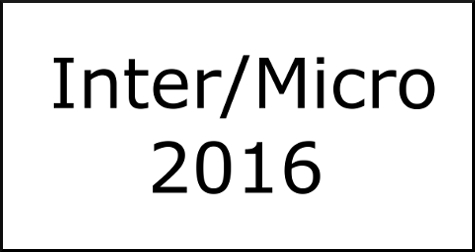Microtrace Scientists to Present at Inter/Micro 2016
Next week, microscopists from around the world will gather in Chicago for Inter/Micro 2016- the premier international microscopy conference. Six Microtrace scientists will present papers that will span all three days of the symposium, which runs from June 6th through June 8th.
Microtrace talks include:
- Applications of Glass Microspheres as Forensic Trace Evidence (Brendan Nytes, session chair; Monday afternoon)
- Laser Toner Nanoparticles as Forensic Evidence (Katie White; Tuesday afternoon)
- Veterinary Forensics: The Application of Trace Evidence to an Animal Cruelty Case (Jason Beckert; Wednesday morning)
- A Generalized Approach to Forensic Dye Identification (Ethan Groves; Wednesday morning)
- Dye Identification in Casework: How Far Can You Go? (Chris Palenik; Wednesday morning)
- The Role of Fluorescence in the Examination and Analysis of Dust Traces (Skip Palenik; Wednesday afternoon)
Research presentations given during the first three days cover techniques and instrumentation, environmental and industrial microscopy, and forensic and chemical microscopy.
All abstracts for Inter/Micro presentations can be found here.
Inter/Micro
Since its beginning in 1948, Inter/Micro has grown to attract microscopists, both amateur and professional, from all areas of light and electron microscopy. Recognized internationally, this meeting is now held every year in Chicago and continues to be sponsored and hosted by McCrone Research Institute.
The first Microscopy Symposium on Electron and Light Microscopy was developed by Walter C. McCrone (light microscopist in chemistry) and Charles Tufts (electron microscopist in physics) and was held June 10-12, 1948 at the Stevens Hotel, now the Hilton Chicago. The Inter/Micro symposia are believed to be the very first meetings to gather top people in light and electron microscopy together to discuss very small particles including the range of ultrafine particles that are commonly referred to today as “nanoparticles.”
More details about the conference can be found here.
How May We Help You?
Contact usto discuss your project in more detail.








